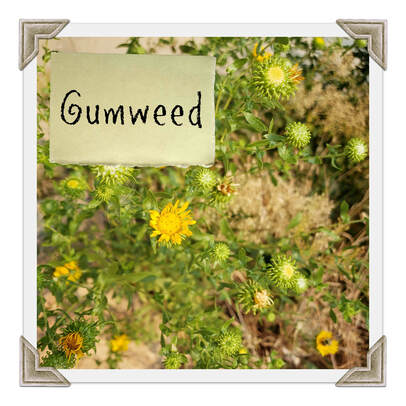Family: Composite or Asteraceae, includes daisy, sunflower, etc.
Parts: All parts; buds, blossoms (most often used), leaves and root.
Gumweed is a wild plant growing around the Rocky Mountain area. The blossoms excrete a sticky substance that binds with mucus in the body and then carries it out through the waste systems. Because of this special characteristic of "unsticking stuck stuff" it can remove congestion from all parts of the body and is specific for the respiratory system.
Properties and Actions
- alterative (blood purifying and cleansing)
- antiasthmatic
- antispasmodic
- antimicrobial
- anti-inflammatory
- demulcent (soften, relieve and protect irritated tissue)
- diuretic (urine flow)
- expectorant
- hypotensive (lowers blood pressure)
- sedative
- stomachic
- vulnerary (heals wounds)
- cooling
- moistening
Uses
- Respiratory conditions of all kinds including bronchitis, whooping cough, pneumonia, allergies, asthma, etc.
- Coughs of all kinds including wet, dry, lingering, and irritating.
- Cold and flu.
- Sore throat and infections.
- Infections of the upper and lower respiratory tract such as ear and throat, tooth and gum, sinus and lung. (1/2 teaspoon tincture or 1/2 cup tea four times a day until symptoms subside)
- Skin irritations such as poison ivy, rashes, hives, bites and stings, etc. (salve, cream or compress)
- Tissue repair and skin regeneration, use for chronic and acute skin conditions.
- Helps alleviate congestion of all kinds throughout the body including digestive, kidney, liver, spleen and respiratory system mentioned above.
- Massage oil or tincture into joints and muscles to help alleviate pain and inflammation.
Methods of Use
- Tea, gargle, wash
- Steam inhalation, bath or soak
- Tincture (use alcohol as the menstruum)
- Syrup
- Poultice, compress
- Oil, salve, cream
Wildcrafting/Harvesting
- Harvest the bud, blossoms and leaves as they appear on the plant. Can be used fresh or dried for future use.
























